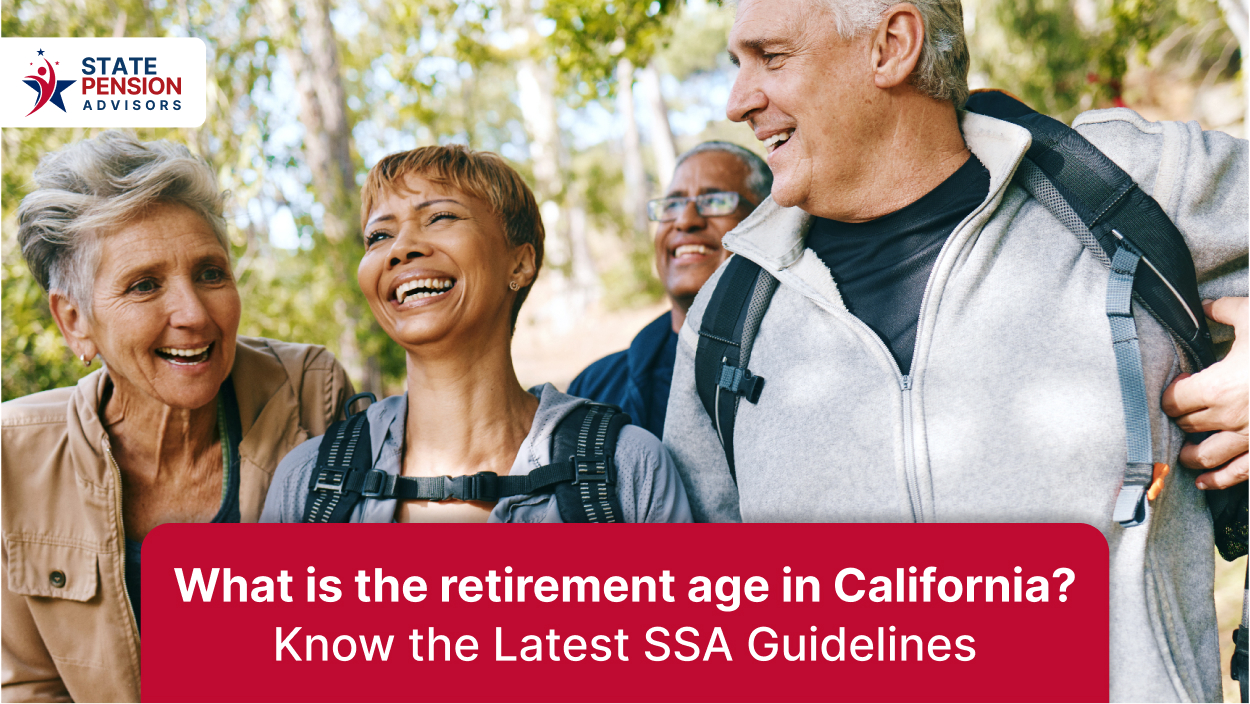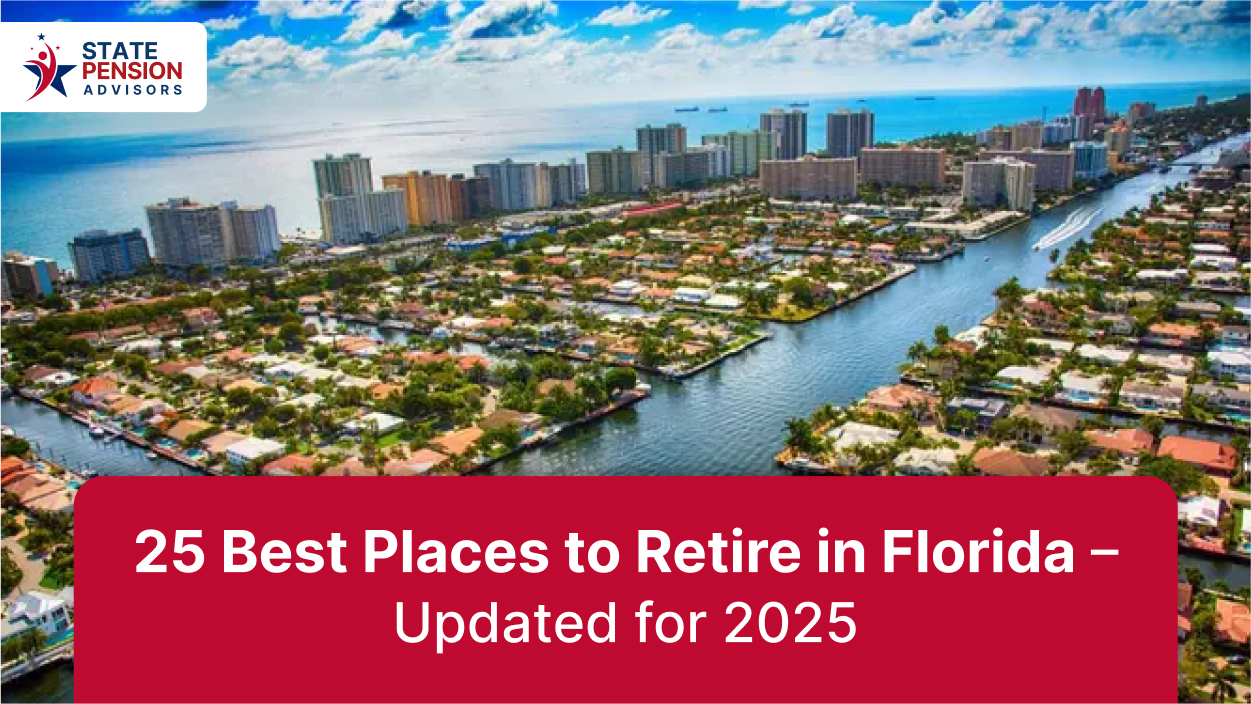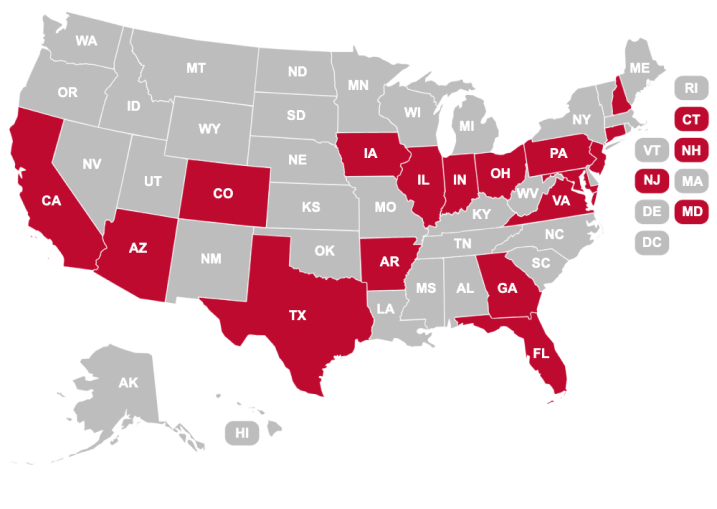What is the retirement age in California? Know the Latest SSA Guidelines

Retirement age can vary depending on whether you work in the public or private sector. For Social Security benefits, the full retirement age is 67 for those born in 1960 or later. However, you can choose to start receiving benefits as early as age 62, though the monthly amount will be reduced.
For public employees under CalPERS, early retirement is typically possible from age 50, but earning full benefits may require around 30 years of service. The exact eligibility and benefit rules depend on your plan type and when you began your employment.
Here’s everything you need to know.
Social Security Retirement Age in California 2025
Social Security is the main retirement income source for most Americans. The age you start collecting benefits determines how much you’ll receive.
Here’s what you need to know:
- You can start collecting benefits as early as age 62, but your monthly benefit will be reduced permanently.
- Your full retirement age depends on your birth year.
- If you were born in 1960 or later, it’s 67.
- If you were born between 1943 and 1954, it’s 66.
- If you were born in 1960 or later, it’s 67.
- If you wait beyond your full retirement age (up to age 70), your monthly benefit increases each year you delay.
- Taking benefits early can reduce your payout by 25–30%, while waiting until 70 can increase it by about 8% per year.
In short:
- Retiring at 62 means you receive smaller payments, but you start getting them earlier.
- Retiring at 67 allows you to receive your full retirement benefit.
- Retiring at 70 gives you larger monthly payments for the rest of your life.
Your health, life expectancy, and financial situation will help determine the right time for you.
California Public Employee Retirement
California’s public employees have specific retirement systems, mainly through CalPERS and CalSTRS. Your retirement age and benefit depend on the system you belong to, your years of service, and when you began your public employment.
- CalPERS: California Public Employees’ Retirement System
CalPERS is the largest public pension system in the U.S., covering employees of state departments, schools (non-teaching roles), and many local agencies.
Eligibility and Retirement Age:
- You can generally retire at age 50 with at least 5 years of service credit.
- However, if all your service was earned on or after January 1, 2013, you must be at least age 52 to retire.
How Benefits Are Calculated:
Your pension amount depends on:
- Years of service credit
- Age at retirement
- Final compensation (average salary over your highest-earning period)
The longer you work and the older you are when you retire, the higher your benefit factor. For example, retiring at 50 with 20 years of service will pay less than retiring at 60 with the same service, because age and time increase your benefit percentage.
CalPERS also offers:
- Disability retirement options
- Survivor benefits
- Health coverage for eligible retirees
These make it a strong system for long-term public employees planning a stable retirement.
2. CalSTRS: California State Teachers’ Retirement System
CalSTRS covers teachers, administrators, and academic professionals working in California’s public schools and colleges.
Retirement Age by Membership Date:
- If you joined before January 1, 2013:
- Full retirement age is 60
- Early retirement is possible at 55 with at least 5 years of service credit.
- Full retirement age is 60
- If you joined on or after January 1, 2013:
- Full retirement age is 62
- Early retirement is possible at 55 with 5 years of service.
- Full retirement age is 62
Your monthly benefit is based on:
- Service credit (years you worked and contributed)
- Final average salary (your highest 3 or 5 years of earnings)
- Age factor (how old you are when you retire)
For example, a teacher retiring at 55 with 10 years of service will receive a smaller pension than someone retiring at 62 with 25 years of service.
CalSTRS also encourages educators to use its online calculators to estimate benefits, compare scenarios, and plan a smoother transition into retirement. You should check out California retirement benefits.
California Private Employee Retirement
Private-sector employees in California don’t have a state-managed pension system like CalPERS or CalSTRS. Instead, retirement depends on Social Security, employer-sponsored plans, and personal savings.
Here’s how it usually works:
- Most employees rely on 401(k) plans, IRAs, or pension plans offered by their employers.
- You can start receiving Social Security as early as 62, but many wait until 67 or 70 for higher benefits.
- Retirement readiness depends on how much you’ve saved, your investment strategy, and your lifestyle goals.
Private employees often need to plan more actively since their benefits aren’t guaranteed like public pensions. Working with a financial planner can help estimate how much you need to save for the lifestyle you want post-retirement.
Also read - what age can teachers retire in california
Key Things to Consider Before Retiring
Before deciding when to retire in California, think about these important factors:
1. Health and Lifestyle
Are you physically and mentally ready to stop working? Early retirement allows more free time, but continuing to work might keep you socially and financially active.
2. Cost of Living
California is known for its high cost of living, especially in cities like San Francisco, San Diego, and Los Angeles. Consider whether your retirement income will comfortably cover housing, utilities, and healthcare.
3. Taxes
California taxes most retirement income (including pensions and withdrawals), but Social Security is exempt. Understanding tax implications helps you plan smarter.
4. Healthcare
Make sure you know your Medicare eligibility and the cost of supplemental insurance. If you retire before 65, budget for private health coverage.
5. Longevity and Inflation
If you retire early, your savings need to last longer. Consider the impact of inflation on your future purchasing power.
6. Lifestyle Plans
Travel, hobbies, volunteering, or part-time work, all of these choices will affect your income and spending.
Planning Your Finances
A successful retirement begins with careful financial planning. Here’s how to prepare:
- List your income sources: pensions, Social Security, savings, investments, and part-time income.
- Estimate your expenses: housing, food, medical, travel, and leisure.
- Close existing debts: Pay off loans and credit cards to reduce monthly costs.
- Build an emergency fund: Save at least 6–12 months of expenses.
- Review your investments: Balance risk and returns to match your retirement horizon.
- Seek professional advice: A retirement planner can help optimize tax strategies and drawdown plans.
Must read - what is the retirement age in pennsylvania
Final Thoughts
Retirement looks different for everyone, and there’s no one “right” age to step back. What truly matters is understanding your options and planning around what fits your life best. Whether you choose to retire early and enjoy more free time or wait a little longer to maximize your benefits, being in touch with the right advisor who understands your finances puts you in control.
Explore your options and schedule a consultation to plan your retirement with clarity and confidence!
FAQS
1. At what age do you retire in California?
Retirement age in California depends on your job and the retirement system you’re part of. Most people retire between 62 and 67, which aligns with Social Security guidelines. However, public employees under CalPERS can choose to retire as early as age 50, depending on their years of service and plan type.
2. At what age can you collect 100% of your Social Security?
You can collect your full (100%) Social Security benefit at age 67 if you were born in 1960 or later. For those born before 1960, the full retirement age gradually ranges between 65 and 66½, depending on your birth year.
3. Can I retire at 55 and collect Social Security?
You can retire at 55, but you cannot collect Social Security that early. The earliest age to start receiving Social Security benefits is 62, and even then, your monthly payments will be permanently reduced compared to waiting until your full retirement age.
4. Is it better to collect Social Security at 62 or 67?
It depends on your situation. Collecting at 62 gives you income sooner, but with smaller monthly checks. Waiting until 67 means bigger monthly payments that last for life. If you expect a longer retirement or want more financial stability later, waiting often pays off. But if you need income sooner or plan to retire earlier, starting at 62 can still make sense.
Disclaimer
The information provided is for general educational purposes only and should not be considered financial or legal advice. Retirement eligibility and benefits may vary based on individual circumstances, plan type, and employment history. Always consult with a financial advisor or your plan administrator for personalized guidance.
Ref-
https://www.unbiased.com/discover/retirement/retiring-in-california
https://www.healthforcalifornia.com/blog/understanding-retirement-age










.png)
.png)


%20Beneficiary%20Everything%20You%20Should%20Know%20as%20a%20State%20Employee.jpg)
%20Plan%20Options%20Everything%20You%20Should%20Know.jpg)





